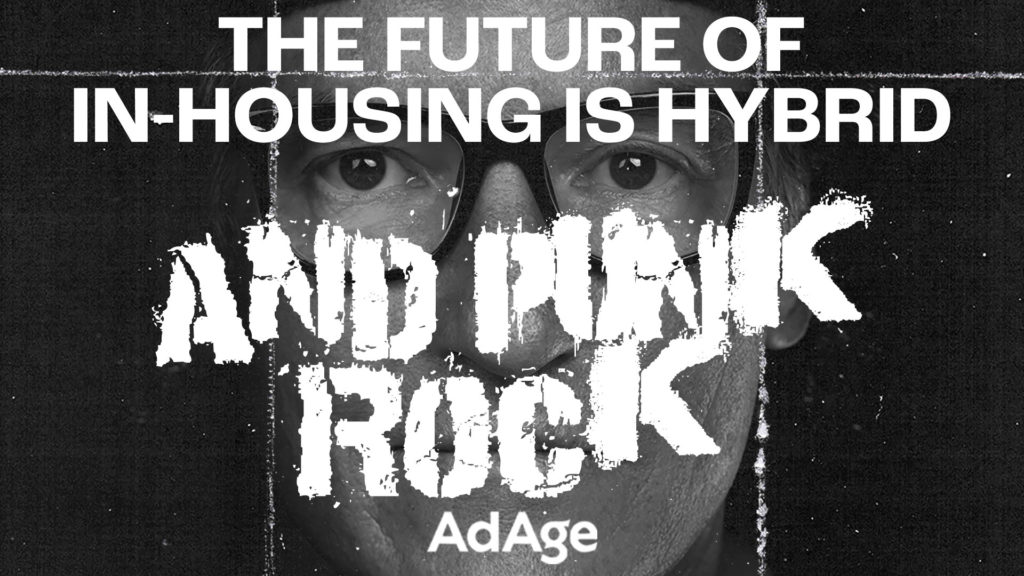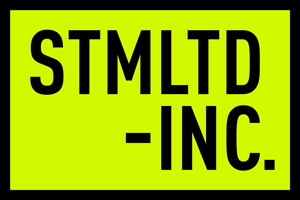By Robb Wagner
5 strategies that radically change how creative work gets done.

Microsoft’s Geoffrey Colon shared a recent post on LinkedIn that made me smile. “The punk rock era of creative work is here. And of course, the people who hate it are the corporate rock types.”
I spent the late 1990s working in major broadcast entertainment by day and playing guitar in the Silverlake (L.A.) music scene by night. All of Silverlake was a stage and everyone in it was a musician. We didn’t have to drive far or spend a lot of money. Our music movement was formed around our own creativity and culture.
What does this have to do with in-housing and hybrid creative work? Hear me out.
When all the world’s a stage and every brand is a storyteller, the result is a perfect storm for in-housing, as companies balance the growing demand for digital marketing assets, the need to reduce outside costs and the desire for creativity from within their own internal culture.
It’s why conglomerates such as Coca-Cola, Red Bull and Kind have built their own studios, while others including Liberty Mutual and Clorox have built internal teams to tighten the dynamic between creative, planning and execution.
What people aren’t talking about enough is what happens when those in-house agencies become overloaded with creative work and must turn to outsourcing as a makeshift solution—a move that puts them right back into the agency model they’ve been trying to get away from—and paying a premium in the process.
The fact is, 90% of in-house agencies already report that they still work with external agencies. And, behind the scenes, the industry acknowledges that in-housing comes with its own set of new problems to solve. For example, managing workflow has been identified as the key barrier to success for in-house agencies.
Now, here’s where the punk rock piece comes in. In my opinion, in-housing’s solution is a hybrid strategy built on a radical rethinking of how creative work gets done—a methodology that ditches the “corporate rock” formula to achieve a higher level of creative work using fewer resources and less effort overall. And in-house teams ready to “go hybrid” must be open to some major mindset shifts or it won’t work. Below are five counterintuitive best practices they should embrace fiercely:
Stop assigning work to remote artists
I first validated this idea when I took my own creative studio hybrid 10 years ago. I ran an experiment that proved that if we let our remote artists choose the jobs that excite them, we would get better work. Yes, it really was that simple even though it also bucked the industry norm.
Don’t fall for shiny portfolios
Believe it or not, the most important attribute to look for when vetting remote artists is not their artistic capability or technical skill, but rather their ability to follow written instructions (something I learned the hard way!). And the most important job when vetting a remote creative workforce is weeding out artists that cannot follow written instructions, no matter how shiny their portfolios might be.
Forget project management
Wait … what??? My problem with project management has always been the time, effort, budget and resources that it takes away from actual creative work, especially when scaling seven-figure hybrid projects. Instead, flip the emphasis to preparation, putting more effort into pre-production such as fully developed storyboards, mood boards, written text, animatics, instructions and links. When we do these things well before production begins, we eliminate project management altogether.
Don’t talk to remote artists
For a remote artist, the job brief should be the de facto substitute for the creative director, producer, coordinator and project manager all at the same time. It should answer every creative, technical and logistical question a remote artist may have, before it can be asked. Learning how to make effective remote job briefs instead of trying to talk to remote artists has been critical to my hybrid success. I recommend making two people responsible for writing and populating each remote job brief with all the important information and a third person responsible for finding holes in it. Then keep repeating the process until no more holes are found. When you’ve got it right, there shouldn’t be anything to talk about.
Don’t try to manage time
The best practice with remote work is paying for results, not time. Because of this, we don’t ask remote artists to be on-call, keep certain hours or make any time commitments aside from meeting our delivery deadlines. We make realistic deadlines by using the following remote scheduling formula: The deadline should equal one-and-a-half to twice the amount of time a job reasonably takes an in-house artist. If you let your remote artists alone, they will also do their best work.
To sum it up, in the punk rock era of creative work, you can’t be a corporate rock type. You have to be willing to jump into the mosh pit. If your mind is open to these unconventional ideas, you’re on the right track.
God save the queen. Live your best creative work-life.
Republished from Ad Age
https://adage.com/article/opinion/future-housing-hybrid-and-punk-rock/2384536
